![]()
![]()
![]()
Use LEFT and RIGHT arrow keys to navigate between flashcards;
Use UP and DOWN arrow keys to flip the card;
H to show hint;
A reads text to speech;
50 Cards in this Set
- Front
- Back
|
Diego Velazquez
The Waterserver of Seville c. 1619 Wellington Museum, London |
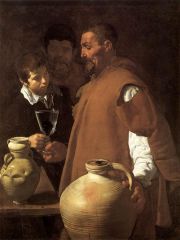
a/t/d/l
|
|
|
Peter Paul Rubens
The Raising of the Cross 1610 Antwerp Cathedral, Belgium |
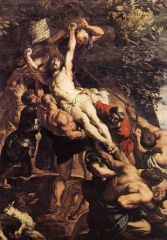
a/t/d/l
|
|
|
Peter Paul Rubens
Garden of Love c. 1638 Prado, Madrid |
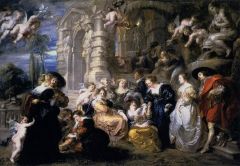
a/t/d/l
|
|
|
Peter Paul Rubens
Arrival of Marie de Medici at Marseilles 1625 Louvre |
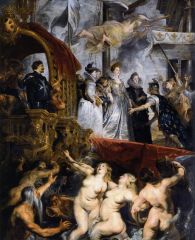
a/t/d/l
|
|
|
Anthony van Dyck
Portrait of Charles I Hunting c.1635 Louvre |
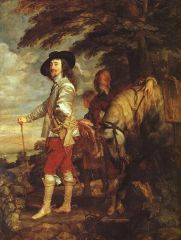
a/t/d/l
|
|
|
Nicolas Poussin
The Abduction of the Sabine Women c.1634 Mertopolitan Museum, New York The greatest French painter of the century and the first French painter in history to win international fame, he nevertheless spent almost all of his career in Rome. There, under the influence of Raffael, he developed the style that was to become the model for French painters of the second half of the century. |
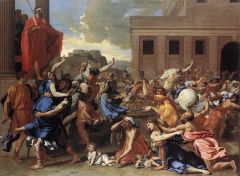
a/t/d/l
|
|
|
Frans Hals
The Jolly Topper (The Merry Drinker) 1630 Rijksmuseum, Amsterdam |
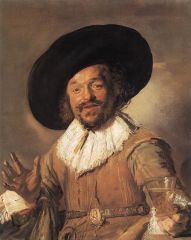
a/t/d/l
|
|
|
Rembrandt van Rijn
The Night Watch 1642 Rijksmuseum, Amsterdam |

a/t/d/l
|
|
|
Gianlorenzo Bernini
The Ecstasy of St. Theresa 1645-52 Cornaro Chapel, Santa Maria della Vittoria |
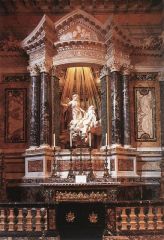
a/t/d/l
|
|
|
Diego Velazquez
Las Meninas 1656 Prado, Madrid |

a/t/d/l
|
|
|
Rembrandt
Self-Portrait 1658 Frick Collection, New York |

a/t/d/l
|
|
|
Rembrandt
The Return of the Prodigal Son c. 1665 Hermitage Museum, St. Petersburg |
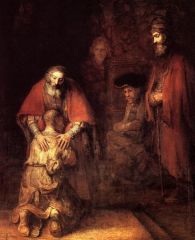
a/t/d/l
|
|
|
Jan Vermeer
Woman Holding a Balance c. 1664 National Gallery, Washington |

a/t/d/l
|
|
|
Jan Vermeer
The Letter c. 1666 Rijksmuseum, Amsterdam |

a/t/d/l
|
|
|
Louis Le Nain
Peasant Family c. 1640 Louvre |

a/t/d/l
|
|
|
Nicolas Poussin
Et in Arcadia Ego c. 1655 Louvre 'Et in Arcadia ego' is a phrase coined by Virgil and used in 17th century Italy expressing, in an elliptical way, the humanistic sentiment: Even in Arcadia I (i.e. Death) am to be found. That is to say, even the escapist, pastoral world of Arcady is no refuge from death. The words feature in paintings from that time inscribed on monumental stonework, especially a tomb, which stands in rural surroundings. The earliest representation of the theme by Guercino (Galleria Corsini, Rome) shows two shepherds coming unexpectedly upon a skull - the typical memento mori - that lies on a piece of fallen masonry bearing the words 'Et in Arcadia ego'. In the hands of Poussin who made two versions the sense was gradually modified. Shepherds are seen before a tomb deciphering the inscription with an air of melancholy curiosity. The skull is no longer significant or is omitted. The words now seem to imply an epitaph on the person - perhaps a shepherdess - who lies entombed: 'I too once lived in Arcady', an alteration to the meaning that somewhat stretches the grammar of the original Latin. In this version all sense of surprise has been removed, and instead, the shepherds are arranged in attitudes of contemplation round the tomb in the countryside. The artist has lost all interest in story-telling, and has concentrated on a totally static scene. No pleasure is taken in surface texture, and the whole is hard and cold, with the figures in statuesque poses. The other, less severe version of the subject by Poussin is at Chatsworth |

a/t/d/l
|
|
|
Nicolas Poussin
Rebecca at the Well 1648 Louvre |

a/t/d/l
|
|
|
Claude Lorraine
Port Scene with the Villa Medici 1637 Uffizi, Florence |

a/t/d/l
|
|
|
Claude Lorraine
Landscape with Dancing Figures (The Mill) 1648 Galleria Doria-Pamphili, Rome |

a/t/d/l
|
|
|
Jean-Antoine Watteau
A Pilgramage to Cythera 1717 Louvre |

a/t/d/l
|
|
|
Jean-Antoine Watteau
Gilles and Four Other Characters from the Commedia dell' Arte c.1719 Louvre |

a/t/d/l
|
|
|
Francois Boucher
The Toilet of Venus 1751 Metropolitan Museum, New York |

a/t/d/l
|
|
|
Francois Boucher
Girl Reclining 1751 Wallraf-Richartz Museum, Cologne |

a/t/d/l
|
|
|
Jean-Honore' Fragonard
The Swing 1766 Wallace Collection, London |

a/t/d/l
|
|
|
Jean-Honore' Fragonard
Bathers c.1765 Louvre |

a/t/d/l
|
|
|
Chardin
Back from the Market 1739 Louvre |

a/t/d/l
|
|
|
Chardin
The House of Cards 1737 National Gallery, London |

a/t/d/l
|
|
|
Thomas Gainsborough
Robert Andrews and His Wife c. 1750 National Gallery, London |

a/t/d/l
|
|
|
Canaletto
The Return of the Bucintoro to the Molo on Ascension Day c. 1732 The Royal Collection |

a/t/d/l
|
|
|
Jean-Baptiste Greuze
The Village Bride 1761 Louvre |

a/t/d/l
|
|
|
Benjamin West
The Death of General Wolfe 1771 National Gallery of Canada, Ottowa |

a/t/d/l
|
|
|
Jacques-Louis David
The Oath of the Horatii 1784 Louvre |

a/t/d/l
|
|
|
Jacques-Louis David
The Death of Marat 1793 Brussels |

a/t/d/l
|
|
|
John Singleton Copley
Watson and the Shark 1778 Museum of Fine Arts, Boston |
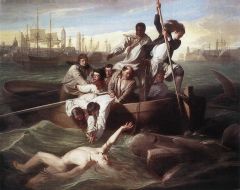
a/t/d/l
|
|
|
William Blake
Isaac Newton 1795 Tate Gallery, London |

a/t/d/l
|
|
|
Francisco Goya
The Family of Charles IV 1800 Prado, Madrid |

a/t/d/l
|
|
|
Francisco Goya
Portrait of the Countess of Chinchón [near Madrid] 1800 Uffizi |

a/t/d/l
|
|
|
Francisco Goya
The Third of May, 1808: The Execution of the Defenders of Madrid 1814 Prado, Madrid |
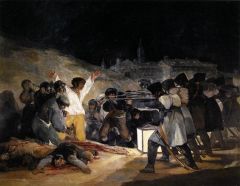
a/t/d/l
|
|
|
Ingres
Grande Odalisque 1814 Louvre |

a/t/d/l
|
|
|
Theodore Gericault
The Raft of the Medusa 1819 Louvre |

a/t/d/l
|
|
|
John Constable
The Haywain 1821 National Gallery, London |

a/t/d/l
|
|
|
Eugene Delacroix
The Death of Sardanapalus 1827 Louvre |

a/t/d/l
|
|
|
Eugene Delacroix
Liberty Leading the People 1830 Louvre |

a/t/d/l
|
|
|
Joseph Turner
The 'Fighting Temeraire' tugged to her Last Berth to be broken up 1839 National Gallery, London |

a/t/d/l
|
|
|
Jean-Francois Millet
The Gleaners 1857 Louvre |

a/t/d/l
|
|
|
Honore' Daumier
The Third-Class Carriage c. 1862 Metropolitan Museum, New York |

a/t/d/l
|
|
|
Rembrandt
Bathsheba at her Bath (the wife of Uriah the Hittite, and afterward of David, by whom she became the mother of Solomon) 1654 Louvre |

a/t/d/l
|
|
|
Frans Hals
The Women Regents of the Old Man's Home in Haarlem 1664 Frans Halsmuseum, Haarlem |

a/t/d/l
|
|
|
Francisco Goya
The Sleep of Reason Produces Monsters c. 1798 Metropolitan |

a/t/d/l
|
|
|
Sir Christopher Wren
St. Paul's Cathedral 1675-1710 London |

a/t/d/l
|

